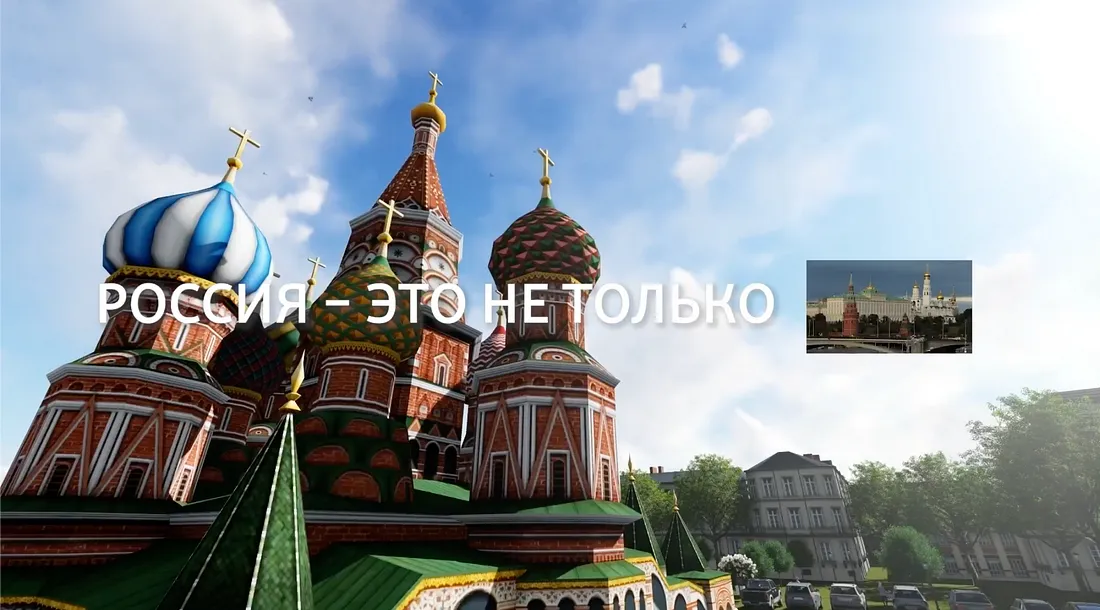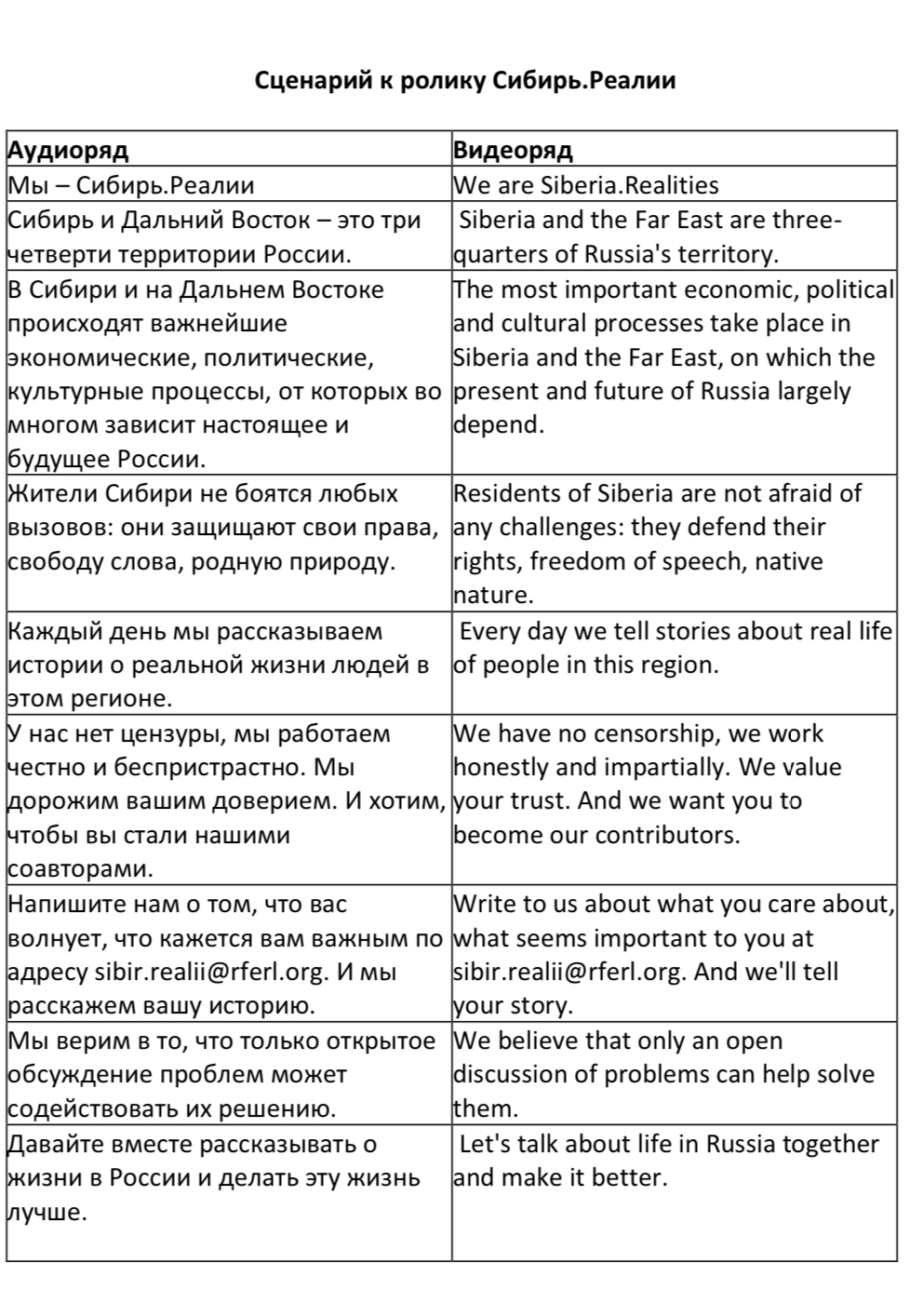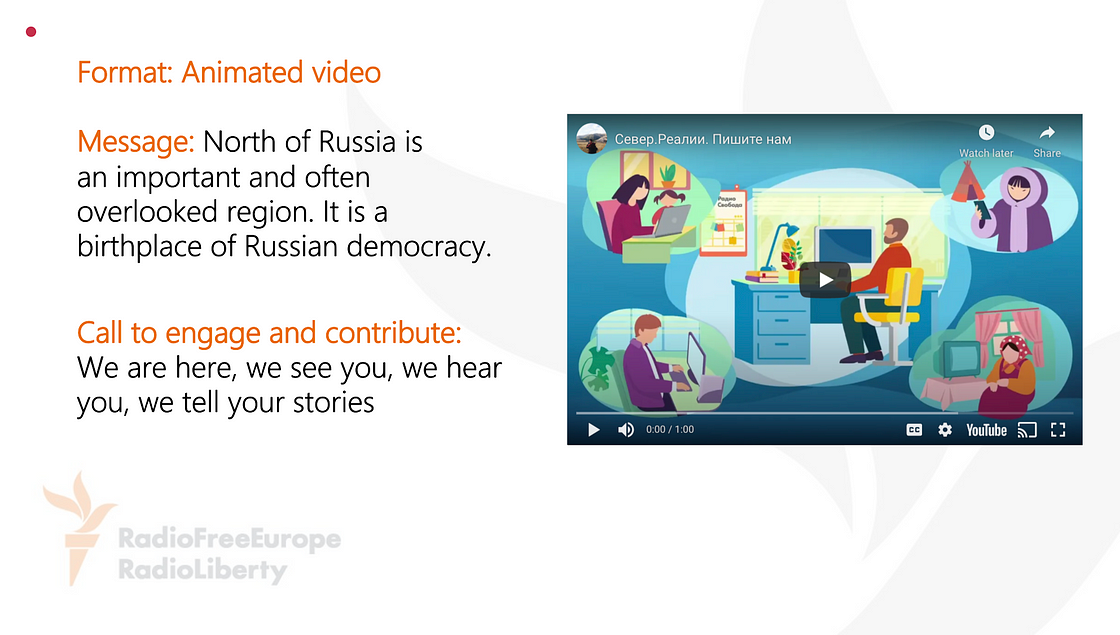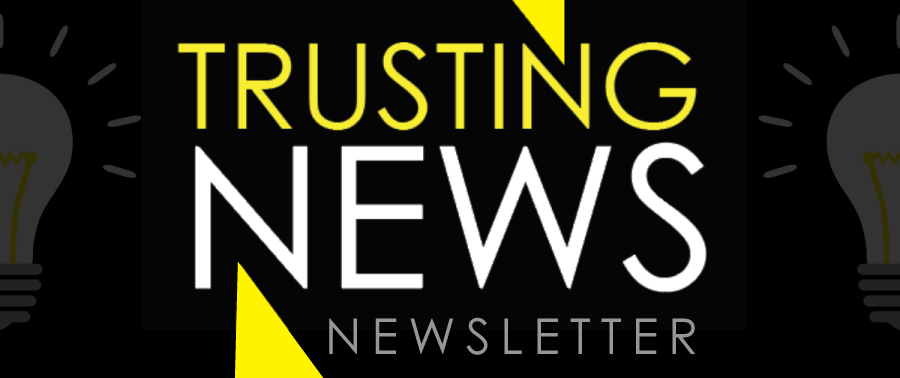
It may sound simple enough: Tell your audience who you are and what you value. But for some reason, journalists and newsrooms find themselves either struggling to put those explanations into words or burying them somewhere on their website where few people find them. Two newsrooms of Radio Free Europe/Radio Liberty (a large, international news organization) wanted […]
How a large global newsroom is building trust using video, surveys, Facebook and more
It may sound simple enough: Tell your audience who you are and what you value. But for some reason, journalists and newsrooms find themselves either struggling to put those explanations into words or burying them somewhere on their website where few people find them.
Two newsrooms of Radio Free Europe/Radio Liberty (a large, international news organization) wanted to change this. RFE/RL is an international news organization funded by the U.S. Congress with a unique mission: it is meant to serve as a “surrogate” local public service media organization in countries where there is no such service.
Their goal was to introduce (and in some cases reintroduce) themselves to their communities while reinforcing their news values and what makes them trustworthy. The Trusting News team worked with these two newsrooms to help the journalists share who they are and what they value and to encourage engagement from the community:
- Szabad Európa, RFE/RL’s Hungarian service
- Two regional media projects of RFE/RL’S Russian Service: Siberia.Realii serving Siberia and Sever.Realii serving northern Russia
RFE/RL publishes in 27 languages across 23 countries. They employ more than 600 full-time journalists and 1,300 freelancers. They’re a large news organization. While we were working with smaller teams of reporters and editors within this large organization, communicating who each news service was individually also involved communicating about the larger organization they are part of and receive funding from. It also involved being willing to talk about their history in the regions and navigate a complicated — and sometimes dangerous — reality for their journalists.
Najiba Kasraee, Acting Director of Journalism Training & Development for RFE/RL, said, “RFE/RL is in a unique position globally, living side by side with its audiences and reporting on the issues that matter most to local communities. Yet RFE/RL is not immune to declining trust in media and must address this challenge, not only in order to retain its existing audience, but also to reach new ones. This means we need to learn how to demonstrate our core values and be very open about our funding.”
Working with Najiba and Patrick Boehler, Head of Digital Strategy for RFE/RL, the Trusting News team determined four ways the news organizations would accomplish their goals:
Create videos to share who they are
- Create videos to share who they are
- Develop and utilize a survey with their audience to better understand what news they want
- Create and manage a Facebook group for their local community
- Revamp and rethink their “About Us” page
The newsrooms worked with Trusting News for nine months to create this content.
The work involved a willingness from the journalists to try something new and be vulnerable in ways they had not before. The journalists had to talk about themselves and their work in ways they were not used to. They also had to put themselves out there and began engaging with their communities in ways that felt new to both sides the journalists and the community.
Continue reading below to see what they created, how the process worked for them and how they are continuing to use what they created to build trust with their audiences.
“Working on this project, I learned that issues like trust are a universal struggle for all news organizations; no matter where we are, be it on the ground in Budapest or Novosibirsk, or in a newsroom in California, we face the same battle.” — Najiba Kasraee, Acting Director of Journalism Training & Development for RFE/RL
1. Build trust by sharing who you are

The RFE/RL team at Siberia.Realii and Sever.Realii created videos to tell their audiences who they are. Both Siberia.Realii and the Sever.Realii are regional projects within the Russian service. Patrick said the projects are “special” because of their focus on a very local audience.
Siberia.Realii, he said, “is a key independent news source for people in Siberia by people from Siberia.”
Their goals for the videos they created for each of the services was “to increase the awareness of our sites and to increase our audience’s trust in us,” Azamat Kantemirov, Digital Editor for Radio Liberty, RFE/RL’s Russian Service, said. “We think it’s necessary to maintain regular contact with
readers so they can be assured we are a reliable source of news.”
The first video produced was focused on the regional project covering Siberia. To create the video they asked journalists working for the service in the region, “What is the purpose of your work?”
“The process took quite a long time,” Azamat said. “We interviewed colleagues about the importance of their work and wrote scripts for the spots.”

Creating a video like this in Russia came with unique challenges.
“It is hard for public service media like Siberia.Realii in Siberia to stand out, and keep going, because of the political persecution,” Patrick said. “The shift from optimizing for platforms to optimizing for people is particularly hard when you’re banned from the country and criminalized.”
Despite having these very serious and real concerns to navigate, the journalists provided incredible content for the video. The answers to the question “What is the purpose of your work?” were some of the most inspiring and articulated I have heard from journalists during my years with Trusting News. They shared incredibly powerful statements about why they are journalists, why they risk so much to go after the truth and how they do all of it for the communities they live in.
The team had a lot of content to choose from and ultimately agreed on the following script that talked about the area of Siberia and people who live there, the goals of their reporting in this region and how to get in touch with their journalists.

Because there is a risk of political persecution and safety concerns for journalists if they are identified using their real names, voices or photos, the video was created using the voices of other colleagues from Radio Liberty. When considering what voices to use, the team was careful to make sure the pronunciation and dialect matched the Siberian region.
(To watch the video with an English translation, watch on Facebook and turn on closed captioning).
Here’s what Azamat said about the process: “We were faced with an unusual task. We had worked with the audience before, but this time it was necessary to look at it from a different angle. We hadn’t had this kind of experience before, we hadn’t done any special promotional campaigns. Thanks to the support and valuable advice of our colleagues from the Trusting News, we were able to create high-quality videos that clearly describe the purpose of our work and encourage potential audiences to contact us.”
The video was and continues to be shared on Facebook, Instagram, Twitter, Telegram and VK (a Russian social media service).
“This project showed me that the one thing newsrooms like ours need to work on more is building better listening practices into our editorial routines. These along with rekindling a pride in the mission to provide fair and accurate information give me hope that operations like ours can persevere and become a model for public service media elsewhere.”” — Patrick Boehler, Head of Digital Strategy for RFE/RL

The second video they produced was focused on the regional news project covering the northwestern areas of the country. For this video, they wanted people living in this area to know that they are an important part of Russia and that Sever.Realii exists to tell their stories while keeping them informed about what is happening in their communities.

For this video, the team decided to create an animated video.
“The animation was done by an outside company,” Azamat said. Something that “is not a simple process in itself and requires attention to detail.”
This video has also been shared on Facebook, Instagram, Twitter, Telegram and VK (a Russian social media service).
So far the response to both videos has been positive internally and externally.
Azamat said, “colleagues from the newsroom appreciated the clips. They think it was necessary to do it. And they look forward to seeing what results the campaign will produce.”
“Colleagues were at first skeptical and considered this a waste of time,” Patrick said. “When they saw these videos, they did like them because it affirmed a sense of purpose of what they were doing and a sense of appreciation that what motivates them is a source of collective pride.”

2. Build trust by surveying your audience
Szabad Európa created a survey for their audience to better get to know who they are and what they want to see in their news coverage. They were inspired by an approach that we at Trusting News are also big fans of called the Citizen’s Agenda. The journalists in Hungary really embraced it.

For the team, creating a survey was really important because they found themselves in a position where they were reintroducing themselves to their audience.
Patrick offered this context: “RFE/RL relaunched in Hungary in 2020, not as a radio station, but as a small digital media outlet. The media environment in Hungary is very different from our radio broadcasting days between 1950 and 1993. There’s an abundance of digital content for audiences to choose from, and the media landscape is generally divided along party lines. What can we provide that is a meaningful and worthwhile contribution to the Hungarian debate? If we jumped into the fray of the partisan tit-for-tat, we would not be able to fulfill that overarching public service mandate.”
Once they created the survey, Daniella Horvath, Social Media Editor for the Hungarian service, distributed it through their newsletters and social media accounts and using individual outreach. They also created videos to help solicit responses. Those videos were shared on Facebook. In total, they received 1,366 responses.
They analyzed those responses and created word clouds to share some of the answers with their audience on social media. From the survey, they were able to see what types of issues are the most pressing for their community (pandemic and inflation), and they also realized that their audience skewed older. This information has them thinking about how they can pick topics that are more relevant to a younger audience and bring them in as new users.

The Hungarian team still plans to write publicly about the survey results. Trusting News has also encouraged them to mention the survey results when covering a story that arose as a pressing issue in the survey results. Asking users what they want to know more about is a solid first step in engaging with them. The next step (an important one) is covering those topics as they fit with your mission and then the third step (maybe the most important one) is to let your users know when you cover those topics.
You could add a note at the top of a story that says something like this: This story focuses on an issue you said was important to you (link to survey results). Part of our commitment to covering this community is listening to what you say are the most pressing issues here and covering them for you.
“This project gave us the confidence to step back and ask whether what we are reporting on is what people actually care about and invest in relevance first. It also allowed us to question our assumptions on what mattered to people. The next step for us is to address these information needs with reporting that is ever more accessible and revelatory.” — Patrick Boehler, Head of Digital Strategy for RFE/RL

3. Build trust by creating a Facebook group
Creating a survey was the Hungarian team’s first step in developing listening routines to allow them to hear from their audience. The next step they took was creating a Facebook Group called “Szabad Európa Bennfentes.”
Their goals with this group were to:
- Build community with their loyal audience members
- Create a space where they could solicit feedback on published stories but also future stories and topics the community wanted to see covered
- Help find new users and reach a new audience
- Develop new sources from diverse backgrounds
These goals are different from what exists with other news organizations in Hungary. They do not want this to just be a place to share links to their stories. They want it to be a place where there is engagement between the journalists and community members but also among the community members themselves. They plan on encouraging conversations by providing content like Q&A’s with their journalists, sharing behind-the-scenes content and creating polls to ask their audience their opinion on topics, stories, etc.

One really important step the Hungarian journalists took was taking time to think through and create community guidelines for the group. That’s something we at Trusting News feel very strongly about as it can help with moderation and user expectations. If you only have time to engage with the group twice a week or will not always be monitoring it, it’s important to say that. Otherwise, users can have an expectation that you will always be active and then when you are not, you can disappoint them or frustrate them, which can lose trust instead of building it.

Nearly 500 people joined the group in the first three weeks. So far, the Hungarian team has only promoted the group in their newsletter, but a broader promotion is planned. The Hungarian team said more than half of the members have been active in the group since it launched.
Also, the team is already receiving positive responses to the creation of the group. One they received said, “I see you take us seriously, and this feels good. I subscribed to the newsletter. I take it as a credible source. Thank you for letting me in.”

4. Build trust by having an effective and useful “About Us” page
Like a lot of newsrooms, the Hungarian news service had an “About Us” page.
It contained some of the standard information you would find on a page like this (information about how owns them, information about where they publish content and a brief explanation about their mission and editorial independence). But the page was not visually appealing and contained a lot of text. So, the team decided to revamp the page.

Their new “About Us” page contains some of the same information but also some new content. As you can see in the image above, the journalists made the page more visually appealing and easy to read by creating and adding graphics, a video and embedding content from social media.
The page makes it easy to find who works in their newsroom because they added the names of the staff in the top right corner. The video they added explains their commitment to a free press and what that looks like in Europe.
“We’re only just learning to talk about ourselves. This seems so simple, but really isn’t. As journalists, how do we tell people what drives us and motivates us as individuals? The conversations we’ve had on the “About Us” page led us to address these questions head-on and we have come away with a better understanding of how to communicate what we do and how to convey our expertise. Our backgrounds don’t compromise our reporting, they humanize it .” — Patrick Boehler, Head of Digital Strategy for RFE/RL
One of the graphics they created shows where they have journalists producing content and also where RFE/RL has journalists located and creating content. The other graphic explains their commitment to accuracy, discusses their ethics and how they are funded — and how that relates to the news decisions they make.
The page also contains a timeline of the news organization’s time in Hungary alongside some important events in Hungary. They also embedded a post from their Instagram account explaining why they are back publishing news in Hungary and what their purpose is.
Some of the information that is now on this page had to be created from scratch, but some of it existed already. Now, it is all in one place. One of the benefits of creating an “About Us” page that explains who you are, how you are funded, who your journalists are, etc. is that people can find all of this information in one place. This makes it easy to link to later when responding to comments on social media or referencing your mission or values in a daily story.
Related checklist: Create an About Us page
The Hungarian team isn’t done with the page yet. They still want to work to make the graphics they created interactive and are working next on revamping staff bios (which they will link to from the “About Us” page).
We are so glad to see this team of journalists be willing to make this a living document, one that will continue to get updated as they have more to share about their ethics/news values or feel there is something important worth highlighting for their audience. This is so important for journalists and newsrooms to keep in mind. So often we find newsrooms do not tackle something like this because there are so many elements and it can seem daunting. But pages like this do not have to be perfect and comprehensive before you hit publish. They can be added to and changed as you have time to create the elements you want to include. Don’t let a drive for perfection prevent you from starting.
“What I learned from you is the importance of communicating details to the audience. For example, if we are surveying what our audiences are interested in and what their concerns are, we share the whole process with them, not only the result. Simply by being this open, we are fostering a trusting relationship.”— Najiba Kasraee, Acting Director of Journalism Training & Development for RFE/RL
Hear from the journalists involved
Read the Q&A with Hungarian journalists Daniella Horvath and Tibor Vovesz below to learn more about the process the team used to create this content, how their team is using it and what the response from the community and newsroom has been.
Trusting News would like to thank Patrick Boehler, Najiba Kasraee, Charles Recknagel, Daniella Horvath, Tibor Vovesz, Azamat Kantemirov, Alina Zivanovic and the entire RFE/RL team for their time, effort and dedication to building trust with their community through transparency and engagement strategies like these. Through this work, we are able to learn more about what works best to build trust with the public. Without their willingness to experiment, we would not be able to share what works best for building trust with the journalism community. If you are experimenting with building trust, let us know here.
What issue related to trust were you trying to solve? What were you hoping users learned or understood better by consuming this content?
As a newly (re)introduced news outlet with a significant history in Hungary, we were hoping to bring our audience closer to the new ‘Szabad Európa’ by shedding some light on the way we work, the people behind the mission and the reasons for our operation. We were aiming to communicate our values better so that people could have clear expectations about our journalism. We wanted to tell them that their input matters, and that we are here to listen. Laying this foundational work has been crucial as we approach an election.
How would you describe the effectiveness of the content and strategy? Did you think it was effective? Ineffective?
Considering the number of survey respondents as well as engagement via our Facebook group, one could conclude the content we created was effective. We tried to take a multifaceted approach by creating different types of content (stories, infographics, videos, polls), presenting it on different platforms (Instagram and Facebook stories, posts, newsletter, Facebook group) and involving various members from different areas in the newsroom. Providing feedback and building on that for further engagement (the Facebook group) proved to be successful, too.
Describe what it was like to produce this content. Did it come easily to you? Was it challenging? Did it make you think differently?
The Trusting News approach enabled us to think differently about the entirety of our reporting process, which is reflected in every piece of content we created in this project. By placing user needs at the heart of our work, we were able to shift the way we approach the reporting process (i.e. collecting user questions before an interview). Admittedly, it was challenging in the
beginning, not to mention that it is a process in which every member of the newsroom needs to participate.
Can you describe how long producing this content took? Did you involve other members of your newsroom? If so, can you describe what that process looked like and how long it took?
Besides Tibor and Daniella, three other members of the newsroom were directly involved with content creation. One of our senior correspondents appeared on camera in one of the survey promotional videos, taking up about an hour. For our video journalist, it was longer, as he was responsible for shooting and editing. With scripting, production and revision it took about two weeks to finalize the promotional videos (on top of our daily work).
The “About Us” video explainer took longer, approximately a month overall, to produce as graphics needed to be created and animated. The “About Us” static graphics took about a week each to plan, execute and finalize (again, on top of daily work).
Would you use this trust-building strategy or content again? If so, would you do anything differently?
The “About Us” video explainer and the infographics could definitely be reused in the future on social media, potentially to answer questions or eliminate doubt in the comment section. This trust-building approach is something we are continuously refining.
How would you rate the difficulty of producing this content?
Once you have developed an audience-first mindset, it’s not difficult. The only challenge is to find the time for it among all the other tasks we perform every day.
How would you describe the user response to this content?
Users were excited and appreciative about our Facebook group. One of the members commented: “I can see that you take us seriously, and this feels good. I subscribed to the newsletter. I consider [Szabad Európa] a credible source. Thank you for letting me in.”
When we posted the infographic about our operation across 23 countries, we asked people what regions they were most interested in. Several people responded. One of the comments says: “I’m interested in the occurrences of all countries. United States, Germany, EU, China, Canada, Great-Britain etc.”
How would you describe the response from your newsroom after publishing this content? Were people excited to work on this or see the content publish? Were people skeptical? Was it hard to convince people this was necessary?
Though the Hungarian media market is quite competitive, it is pretty slow when it comes to implementing the latest journalism industry trends. The traditional approach, where the journalist is above the audience, better informed and sees the context more clearly, remains quite strong. While newsrooms stick to old methods, clickbait titles, fake news, and government
propaganda are eroding trust in news sources. So, when I first talked to my team about the concept of Trusting News, they were quick to recognize it as the perfect tool for fighting this tendency.
Transferring the concept and the goals to the team was not difficult, but changing habits was a challenge. The Trusting News concept demands that journalists think well ahead: it’s not just about picking a story, investigating and getting an exclusive scoop. To be truly relevant in the long term, we need to involve the audience in the process even before the actual journalistic work starts.
Publishing the re-designed “About Us” page was also a kick-starter: they see that the same information can be presented in a more engaging, exciting and easy-to-understand way.
Overall, my impression is that the Trusting News concept helped change not just our journalists’ attitudes, but also the newsroom workflow. Because of the pre-planning approach it requires, stories are better prepared and can incorporate more additional (multimedia) elements and a wider range of subjects.
At Trusting News, we learn how people decide what news to trust and turn that knowledge into actionable strategies for journalists. We train and empower journalists to take responsibility for demonstrating credibility and actively earning trust through transparency and engagement. Subscribe to our Trust Tips newsletter. Follow us on Twitter and LinkedIn. Read more about our work at TrustingNews.org.

Assistant director Lynn Walsh (she/her) is an Emmy award-winning journalist who has worked in investigative journalism at the national level and locally in California, Ohio, Texas and Florida. She is the former Ethics Chair for the Society of Professional Journalists and a past national president for the organization. Based in San Diego, Lynn is also an adjunct professor and freelance journalist. She can be reached at lynn@TrustingNews.org and on Twitter @lwalsh.


